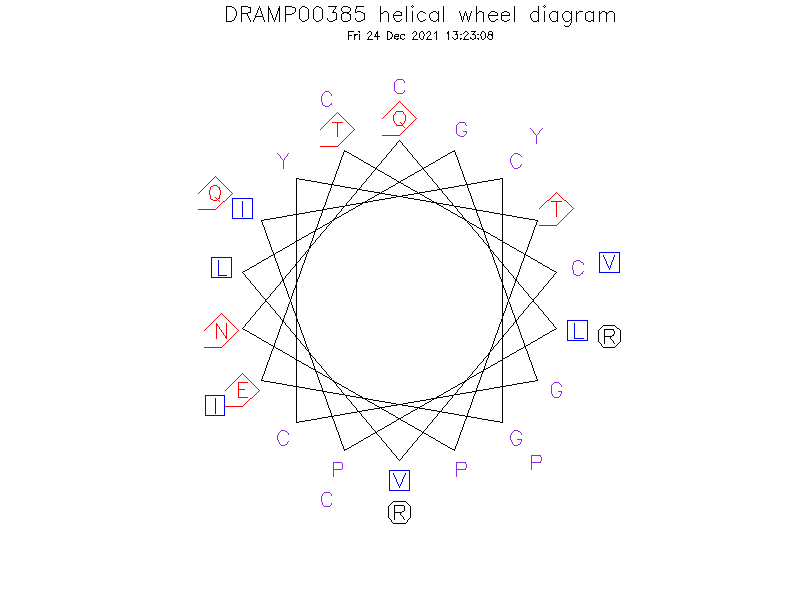General Information
-
DRAMP ID
- DRAMP00385
-
Peptide Name
- Panitide L2 (plants)
-
Source
- Panicum laxum
-
Family
- Not found
-
Gene
- Not found
-
Sequence
- QLPICGETCVLGGCYTPNCRCQYPICVR
-
Sequence Length
- 28
-
UniProt Entry
- No entry found
-
Protein Existence
- Not found
Activity Information
-
Biological Activity
- Antimicrobial, Antibacterial, Anti-Gram-
-
Target Organism
-
- Gram-negative bacterium: Escherichia coli ATCC 25922 (MIC=2.5 µM).
-
Hemolytic Activity
-
- No hemolysis information or data found in the reference(s) presented in this entry
-
Cytotoxicity
-
- [Ref.23195955] IC50 = 6.0 μM against HeLa cells.
-
Binding Target
- Not found
Structure Information
-
Linear/Cyclic
- Cyclic
-
N-terminal Modification
- Pyroglutamyl modification
-
C-terminal Modification
- Free
-
Nonterminal Modifications and Unusual Amino Acids
- There are three disulfide bonds in the peptide structure
-
Stereochemistry
- L
-
Structure
- Bridge
-
Structure Description
- Not found
-
Helical Wheel Diagram
-
PDB ID
- None
-
Predicted Structure
- There is no predicted structure for DRAMP00385.
Physicochemical Information
-
Formula
- C130H209N37O38S6
Absent Amino Acids
- ADFHKMSW
Common Amino Acids
- C
Mass
- 3090.67
PI
- 7.77
Basic Residues
- 2
Acidic Residues
- 1
Hydrophobic Residues
- 6
Net Charge
- +1
-
Boman Index
- -21.53
Hydrophobicity
- 0.25
Aliphatic Index
- 76.43
Half Life
-
- Mammalian:0.8 hour
- Yeast:10 min
- E.coli:>10 hour
Extinction Coefficient Cystines
- 3355
Absorbance 280nm
- 124.26
Polar Residues
- 14
DRAMP00385

Comments Information
PTM
- N-terminus is a pyruglutamyl.
Literature Information
- ·Literature 1
-
Title
- Discovery of linear cyclotides in monocot plant Panicum laxum of Poaceae family provides new insights into evolution and distribution of cyclotides in plants.
-
Pubmed ID
- 23195955
-
Reference
- J Biol Chem. 2013 Feb 1;288(5):3370-3380.
-
Author
- Nguyen GK, Lian Y, Pang EW, Nguyen PQ, Tran TD, Tam JP.

